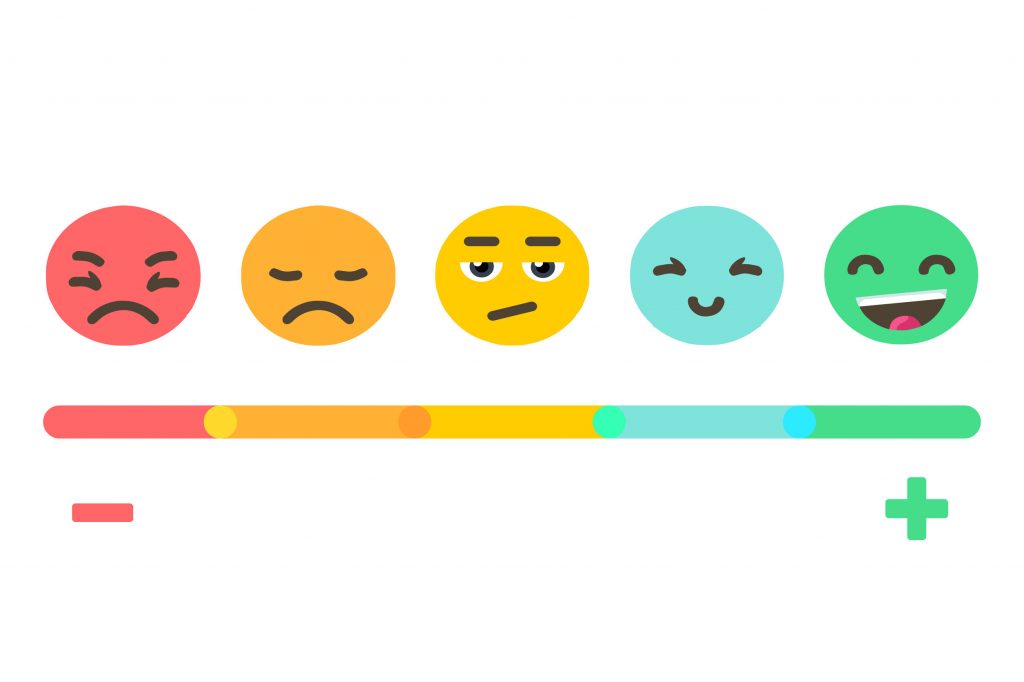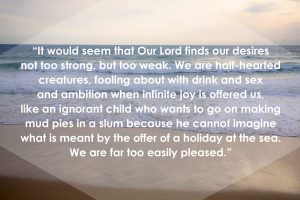resolved 2020: make conscious emotional choices
This year, I’m making a new kind of 2020 goal. Historically, my goals have been practical: start a fitness program, paint the garage, or trim the budget. And I usually include a few character goals: listen to my wife, pray for patience, etc. But this year, I’ve got a different—and long overdue—type of goal in mind. This year I’m going to make what you might call a “structural goal.” This year I will make new choices about my emotions.
This might seem like an obvious category, since my emotion affects me and my family every single day. Along with cognition, faith, and physiology, emotion forms the meaning-making infrastructure of my life. Something so human, so fundamental, to relationships merits some attention, doesn’t it? Why have I not done this before?
Oddly, I’ve not thought about emotion as something that I have a choice about. I hold other people responsible for their emotion, but not so much myself. Honestly, the more accurate confession is that I don’t tend to think about my emotions at all. I might think with them, as in blaming others with anger. I might act out of them, as in mumbling sarcastic one-liners out of impatience. But I don’t think about emotion. I don’t consider the options that I have using my emotions.

So, this year I’m trying a different focus and I’m going to make two choices about my emotions.
- I’m going notice my emotions and try to name them.
- I’m going to consciously decide how to respond to them.
This won’t be easy. My whole life, I’ve largely done the opposite. Instead of noticing, I’ve ignored or suppressed my emotions. Rather than consciously respond to them, I’ve subconsciously reacted. Now, you will notice that both suppression and subconscious reaction are choices, too. I consciously choose my response, but then “pretend” to be “unaware” of that choice. So the experiment this year is to slow down enough to make “aware” decisions.
So, what does this look like?
Well, take writing this post for example, which has produced all sorts of troubling emotions. Normally, I’d try to push through the emotions by making outlines and writing drafts in the hope that the discomfort would go away once I had completed it. Or, if my emotions were troubling enough, I might abandon the post altogether. Either way, I’d be reacting without naming what I feel or consciously choosing a response. The dominate emotion would drive my choice and I’d only be dimly aware of what just happened.
But what might happen instead if I consciously make the two new choices above?
1. Notice What I Feel.
I’ll start by describing the sensations and thoughts. I feel tight in the shoulders. I think that you, the reader, will judge me (“You mean you’ve been counseling all these years and yet you’re such a novice with your own emotion?!”) But I also have the sensation that I’m onto something profound (“Emotions form the meaning-making-infrastructure of my life?” That sounds important!) My insides are a lava lamp of emotion churning, emerging, and receding.
So far I’ve described, but not named, the various emotions. If I tried to name them, I’d call the tightness fear. The thoughts about what the reader will think: insecurity. And the important feeling, I’d call inspiration. Those are just guesses until I become more emotionally articulate, but the names are close.
2. Consciously Decide My Response (to fear, insecurity and inspiration)?
Now that I’ve slowed down enough to notice and name my emotions, I have a shot at deciding what to do with them. Again, the strongest and most immediate emotions will drive my choices if I don’t consciously notice them. In this case, those are fear and insecurity. Without awareness, I will reflexively choose a fight or flight response and hardly realize I’m doing it.
But if I do notice and name my emotions, then options emerge. I can ask the question: what do I want driving how I write? Fear and insecurity? Or inspiration?
Well, when you put it like that… Of course, I want inspiration to drive my writing. But in order to get to the place to “put it like that…” I have to slow down enough to be aware of my choices.
So, resolved in 2020: I will slow down enough to, 1) name my emotions, and 2) consciously choose my response.
Note: I called this a ‘structural goal’, saying that it repairs the ‘meaning-receiving-infrastructure of the soul’. I didn’t develop that idea above, but this structural goal is really a deeply spiritual goal. It is repentance, actually. When we pretend about our emotions and choices, we are reenacting the original lie that we can control reality. But being honest about our emotions and choices makes us face reality – and admit that we need God’s grace. We need God’s grace to face what we feel and to embolden us to choose love as our response.

Roger Edwards joined The Barnabas Center in 1991. He works with both with individuals and couples, helping people confess their need and embrace their available choices to lead healthier lives. Roger also teaches and leads discussion groups and retreats applying the Gospel to everyday life. He is a licensed professional counselor (LPC), holds a master’s degree in biblical counseling from Grace Theological Seminary in Indiana and earned a bachelor’s degree in engineering from the University of North Carolina at Charlotte. He is married to Jean and they have seven children and nine grandchildren.






